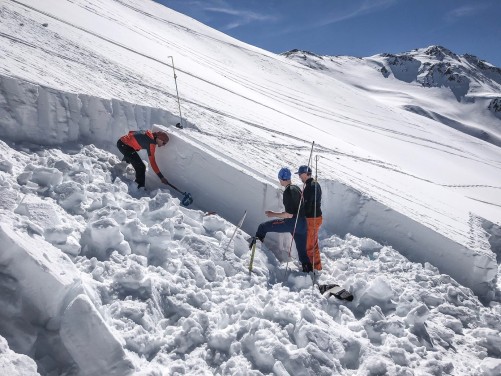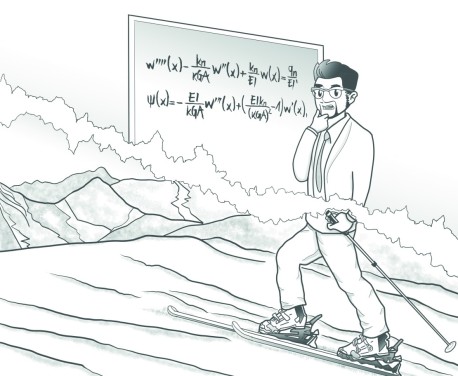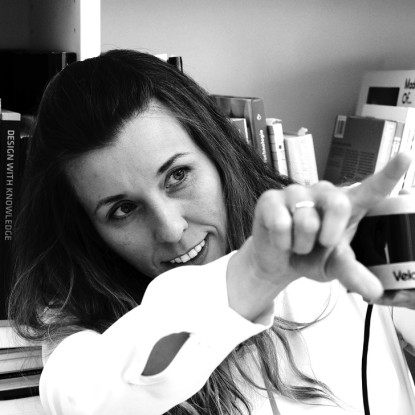| Project name | The missing link: quantifying the role of microstructure to improve mechanical modeling of weak snow layers |
|---|---|
| Acronym | MILK |
| Project partner |
|
| Grantor | German Research Foundation (DFG) |
| Duration | 03/2023–02/2026 |
| Project content | Snow is highly porous, exists close to its melting point and its microstructure changes continuously. This makes it highly compressible and fragile, yet when broken, it can heal quickly. Accurately describing its mechanical behavior is of utmost importance to understand and predict the formation of snow avalanches, which originate due to failure of a weak layer buried within the snowpack. Although the mechanical properties of snow are conceptually well understood, they are still mostly evaluated based on density only, known as a rather poor descriptor. The overall goal of this project is therefore to establish a link between microstructural and mechanical properties of weak snow layers, the key to improving our understanding of snow mechanics and ultimately avalanche prediction. An inherent problem to snow mechanics is that concurrent measurements of relevant microstructural and mechanical properties are missing. Over the last two decades, new measurement techniques were developed that allow us to characterize snow microstructure and perform mechanical measurements with unprecedented detail. Thus, gathering the required data to link microstructure and mechanics has become a looming possibility, and the research outlined in this proposal will lay the groundwork to move snow mechanics into the 21st century. The main challenge is to establish micro-macro links over the wide range of weak layer morphologies found in seasonal snow covers. Thus, we suggest devising novel experiments with improved repeatability and transferability of material properties in combination with micro-mechanical modeling to investigate the entire relevant parameter space. We will carry out field and laboratory measurements, including acoustic wave propagation, high-speed digital image correlation, and microstructure characterization with penetrometer measurements as well as X-Ray tomography. Specifically, we plan to (a) link mechanical and microstructural properties through new lab tests and conducting a series of measurements, (b) comprehensively investigate this link through micro-mechanical modeling, (c) define typical ranges of material parameters associated with avalanche release by collecting field data, and (d) improve instability assessment for avalanche forecasting by implementing our results into a numerical snow cover model used operationally in many countries. By assembling an interdisciplinary team of experts, we intend to tackle an old problem in snow mechanics by combining state-of-the-art and novel approaches. This experimental and modeling effort will lead to the development of robust parameterizations for snow properties relevant for numerous applications beyond avalanche forecasting, from engineering aspects of construction and transportation on snow to the interpretation of seismic waves in snow. Hence, we expect our results to be timely and relevant not only with regard to public safety, but also by solving a longstanding scientific problem. |
Department of Civil and Environmental Engineering

MILK
The missing link: quantifying the role of microstructure to improve mechanical modeling of weak snow layers
MILK
The missing link: quantifying the role of microstructure to improve mechanical modeling of weak snow layers
Research project MILK






